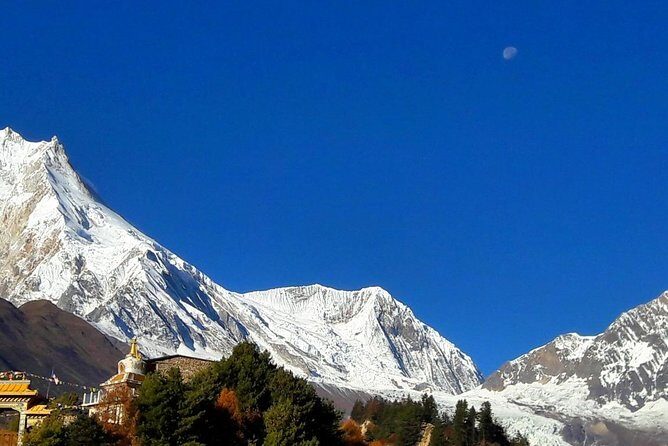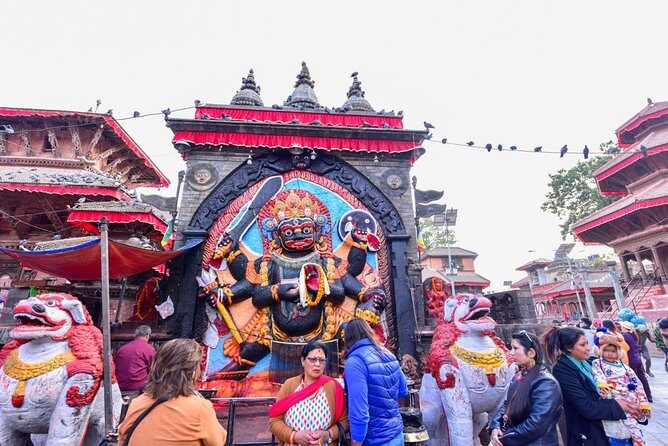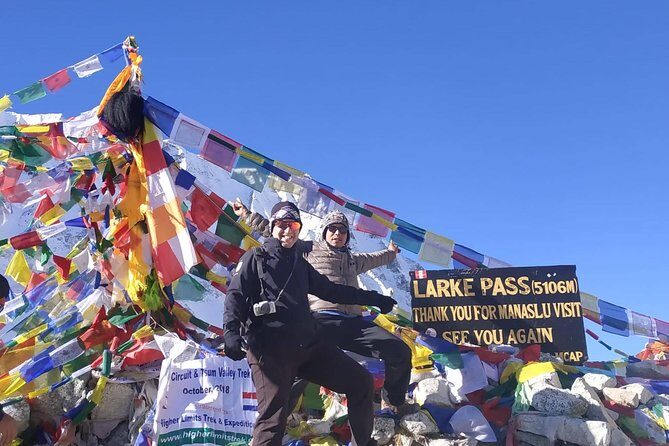Physical Address
304 North Cardinal St.
Dorchester Center, MA 02124
Physical Address
304 North Cardinal St.
Dorchester Center, MA 02124

Discover the untouched beauty of the Tsum Valley with this 18-day trek. Expect stunning mountain views, cultural encounters, and challenging trails.
Planning to explore Nepal beyond the well-trodden paths? The Hidden Valley – Tsum Valley Trek is a rare opportunity to go off the beaten track and see some of the country’s most secluded and breathtaking landscapes. This 18-day adventure is packed with stunning mountain vistas, cultural sites, and challenging terrain that will push your limits — in the best way possible.
One of the things we love about this trek is how it combines spectacular scenery with authentic local culture. You’ll pass through tiny villages, witness age-old monasteries, and experience the warm hospitality of the Tsum Valley’s residents. The inclusion of well-organized logistics, like airport transfers and accommodations, makes the whole trip smoother.
A possible consideration is the demanding nature of the trek — with average daily hikes of around 7 hours, it’s suited best for those with a moderate level of physical fitness. Also, since the trek is quite remote, some amenities we often take for granted may be limited, such as Wi-Fi or hot showers.
This trip is ideal for seasoned hikers, adventure seekers, and those hungry for authentic Himalayan culture. If you’re looking for a journey that balances stunning natural beauty with genuine culture and don’t mind a physical challenge, this trek could be your next big adventure.

Outdoor enthusiasts can explore more Kathmandu trails with these hiking options
Your journey begins in Kathmandu, where a friendly guide will meet you at Tribhuwan International Airport. After a comfortable hotel stay, you’ll get a taste of the city’s vibrant heritage at sites like Durbar Square. This initial day is perfect for acclimatization and allows you to soak in Nepalese culture before heading into the wild.
The following day, you’ll visit iconic UNESCO sites such as Boudhanath, Pashupatinath, and the Monkey Temple. These landmarks aren’t just sightseeing stops; they’re windows into Nepal’s spiritual heartbeat, and exploring them early helps you understand the cultural context of your upcoming adventure.
Day 3 marks the start of your overland journey toward the mountains. You’ll travel in a private vehicle — a 4WD Jeep is recommended — through districts like Dhading and Gorkha, offering glimpses of lush forests, terraced fields, and Himalayan foothills. The drive can take around 6 hours, but the scenery makes the time fly.
This stage is crucial because it takes you from urban hustle to rural tranquility, setting the tone for what’s to come. Be prepared for some bumpy roads and changing weather patterns, which add to the adventure.
Day 4 kicks off the real trekking. Starting from Soti Khola at 700 meters, your first day involves about 6-7 hours of walking to Machha Khola. Along the way, you’ll pass through Gurung villages like Lapubesiu and Khanibasi, where local life is palpable and enriching.
This part of the trek introduces you to Nepal’s hilly terrain — expect steep ascents, lush forests, and river crossings. Many reviews mention how the cultural encounters in these villages offer a genuine connection to the local way of life. One trekker appreciated the “warm reception from villagers” and the chance to sample traditional foods.
Subsequent days bring higher altitudes, with notable stops at Khola Besi, Chumling, and Chhokang Paro. Between these, you’ll encounter spectacular mountain views, especially around Chumling, where peaks like Baudha Himal (6,672m) dominate the skyline.
The trek to Mu Gompa at 3,700 meters is a highlight — the oldest monastery in the region, it’s a sacred and serene place to reflect and appreciate the spiritual side of Himalayan life. Visitors frequently mention the “impressive artistic craftsmanship” of the monastery as well as the “warm hospitality” of local monks.
Throughout the journey, you’ll witness a blend of rugged natural beauty and age-old traditions. The local inhabitants, predominantly of Tibetan origin, are known for their friendliness and the preservation of their unique customs, monasteries, and dialects.
The trek’s more remote nature means you’ll encounter fewer travelers, making the experience feel authentic and untouched — a rare treasure in Nepal’s growing trekking scene.
One of the most exciting parts is reaching the Ganesh Himal Base Camp, close to the border of adventure and serenity. The trek to Langtang Khola and the Torogumba Glacier offers dramatic landscapes and the chance to see glaciers up close. Nights are spent camping under the stars, giving a true sense of wilderness.
It’s important to note that this section includes some challenging ascents and descents, so expect a good workout. The reward? Views of towering peaks and a feeling of accomplishment that stays long after you descend.
As you start heading back, the trail takes you through lush forests, waterfalls, and charming villages. The Milerpa Cave, a notable highlight on the return journey, is a fascinating feature — a natural cave that, according to reviews, offers a “daunting but awe-inspiring” experience.
The final days involve descending to lower altitudes, crossing suspension bridges, and visiting local villages where you can reflect on your journey. The last night is spent in Gorkha district, a historical town with its own scenic and cultural charm.
The tour’s price (~$1653) covers most essentials — all meals during trekking, accommodations, permits, guides, and transfers. Reviewers have praised the “smooth logistics and professional guides” for making the challenging trek manageable. An experienced guide and one porter for every two trekkers are included, which helps lighten the load and ensure safety.
However, travelers should keep in mind that hot showers, Wi-Fi, and laundry are not included, common in remote treks. While some reviews mention minor discomforts, most agree that the value for such a comprehensive itinerary is excellent — especially considering the remote locations visited.
This trek is best suited for those with moderate fitness levels who are ready for full days of hiking and altitude gains. It’s ideal for travelers seeking culture combined with natural beauty and who don’t mind rougher terrain. The journey’s remote nature means it’s less crowded, which is perfect for those craving solitude and authenticity.

If you’re after a challenging but rewarding adventure that combines stunning mountain scenery with genuine cultural experiences, this trek offers fantastic value. It’s an excellent choice for seasoned trekkers who want to venture into a lesser-known part of Nepal and see the Himalayas from a different perspective.
The knowledgeable guides and well-organized logistics make this a manageable trip despite the rugged terrain. The inclusions—permits, accommodations, and meals—are comprehensive, with the price reflecting a high-quality experience.
Just remember, this is not a casual walk — expect long days on your feet, unpredictable weather, and the need for good physical conditioning. But in return, you’ll gain memories of untouched landscapes, ancient monasteries, and Himalayan hospitality that will stay with you forever.

What is the total duration of the trek?
The trek lasts approximately 18 days, including travel to and from Kathmandu, with most days involving around 6-7 hours of walking.
Is there airport pickup and drop-off included?
Yes, the tour includes airport pickup and drop-off in Kathmandu, making initial and final logistics much easier.
What kind of accommodation is provided during trekking?
Accommodation is included in the form of teahouse lodges and tents when camping, especially at higher altitudes like Ganesh Himal Base Camp.
Are meals included?
Yes, all meals during trekking (breakfast, lunch, dinner) are covered, ensuring you’re well-fed for the demanding days.
Do I need special permits?
All necessary permits, like the Manaslu conservation and Tsum Valley entry fees, are included in the price.
Is there support for emergencies?
Yes, emergency rescue services and a first aid kit are included for safety during the trek.
What kind of physical fitness is required?
A moderate level of fitness is recommended, as the trek involves substantial daily hiking and high-altitude walking.
This Hidden Valley – Tsum Valley Trek offers a rare glimpse into Nepal’s quieter, more sacred corners. Combining mountain grandeur with cultural richness, it appeals most to those looking for an authentic, physically rewarding adventure. With experienced guides and inclusive logistics, it’s a trip that promises both challenge and deep satisfaction for avid trekkers.